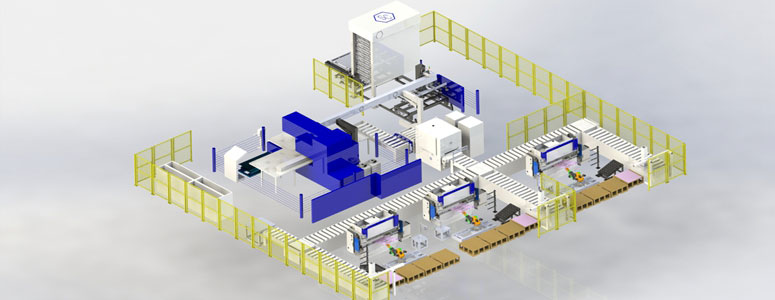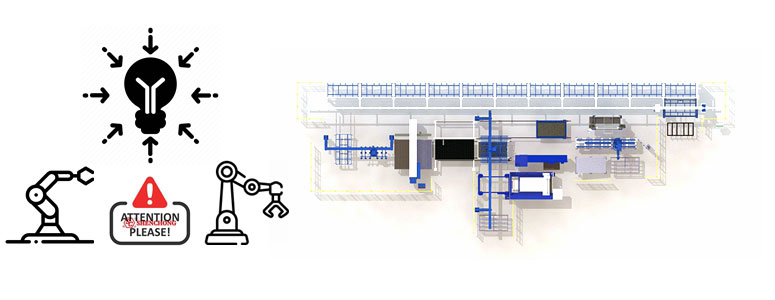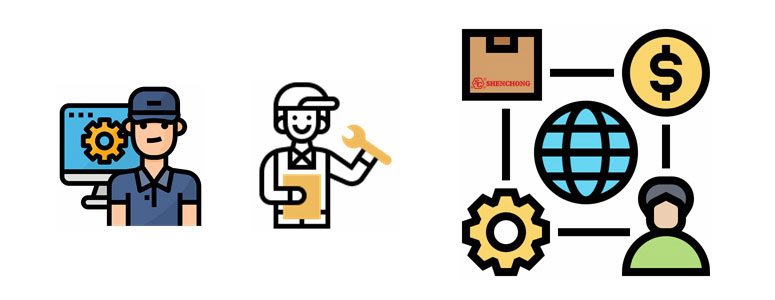
Sheet metal processing has a wide range of uses, including precision manufacturing of electronic and electrical parts, automotive and aerospace equipment manufacturing, medical equipment manufacturing, and more. The processing of stainless steel, iron plate, aluminum alloy plate, galvanized plate and other metal plates into the required appearance according to the process drawings is called sheet metal processing.
Traditional sheet metal workshops do not have high technical requirements. As long as the factory buys basic production equipment and produces some parts with simple design, there is no pressure.
With the continuous improvement of market demand and the vigorous development of precision manufacturing, these small factories of metal parts have gradually lost their market competitiveness. Therefore, many companies choose to expand investment, introduce advanced equipment, improve design technology, and develop in the direction of sheet metal intelligent manufacturing.
To build a high-end intelligent sheet metal workshop, the first is the rational planning and layout of the plant. This includes process planning and plane layout.

How to use less investment to design an economic, safe, suitable for capacity demand and comfortable working environment, improve efficiency, ensure safety and meet the requirements of relevant national laws and regulations is the main content of planning and layout?
Technicians will generally connect the process flow in detail with the process director of the plant, and then issue the graphic design scheme. So what research do we need to do about the basis of layout design of sheet metal workshop?
Determine Party A’s development objectives, product specifications, types, output, supporting capacity, investment stages and other programmatic requirements. These factors directly affect the determination of workshop configuration, area, equipment type and quantity.
If we are in a centralized manufacturing park, we should understand the overall planning scheme of the whole park, including the general layout of the workplace, building types, logistics and other materials.
This mainly refers to the occupational health and safety protection requirements in the production process and relevant laws, regulations, standards, requirements and specifications. For example, if there is a need for high-temperature operation, it is necessary to understand the temperature control information.
Arrange the layout according to the number and size of equipment.
Can the quantity of equipment meet the production demand of this sheet metal workshop? Can the size of the equipment enter the workshop safely and operate normally? After arranging the equipment, whether there is enough space for plate loading and unloading. Is there enough space for workers’ auxiliary work? How to place equipment and plan production processes to maximize site utilization and production efficiency?
These are all issues that we should consider in place.

Sheet metal workshop has a large load and a lot of equipment. The power supply of the workshop is generally designed according to the cable power supply. In some places, the busway can be reserved.
Low pressure compressed air is generally used in sheet metal workshop. The air source connector is generally 1 ~ 1.5m above the ground. The gas pipe adopts ball valve, which is required to follow from the column beam and not be buried on the ground. Four air pipe interfaces are required at each column.
The fire protection level of sheet metal workshop is relatively high, so we must carefully consult the documents of each country and region.
For example, the cooling pool for spot welding in the sheet metal workshop shall be set outside the plant wall close to the spot welding area. Use concrete pools. The size, specification and model of the pool are designed according to the process parameters. The water supply system shall be provided with thermal insulation measures to prevent freezing of pipelines and pools in winter.

In conclusion, sheet metal workshop operations involve a combination of aerial and ground-based three-dimensional operations. With the production process and different degrees of intelligent automation, the planning layout will be different. Therefore, early planning and design are very important.

In addition, in order to be competitive in the market, sheet metal factories also need to carry out in-depth research on topics such as 5S management, digital application software, and precision equipment for better improvement in quality and efficiency.